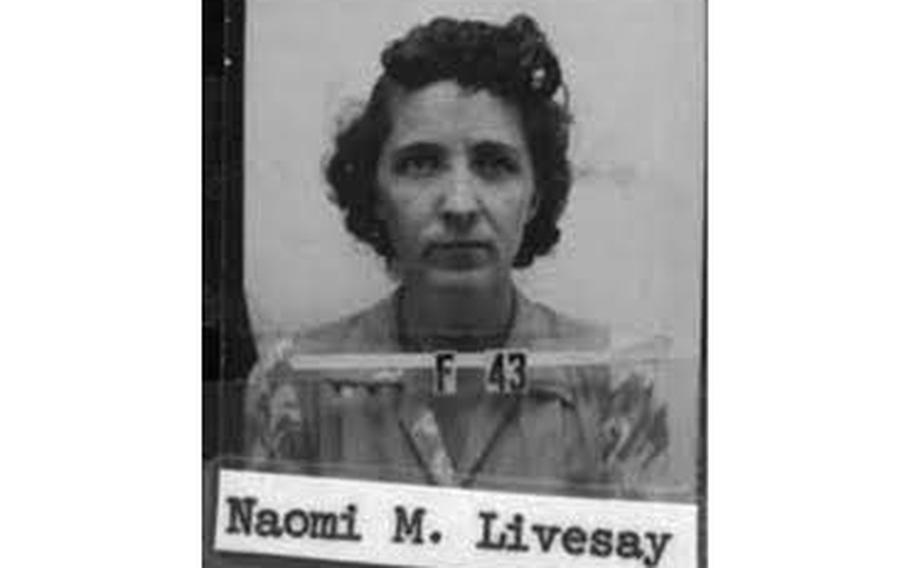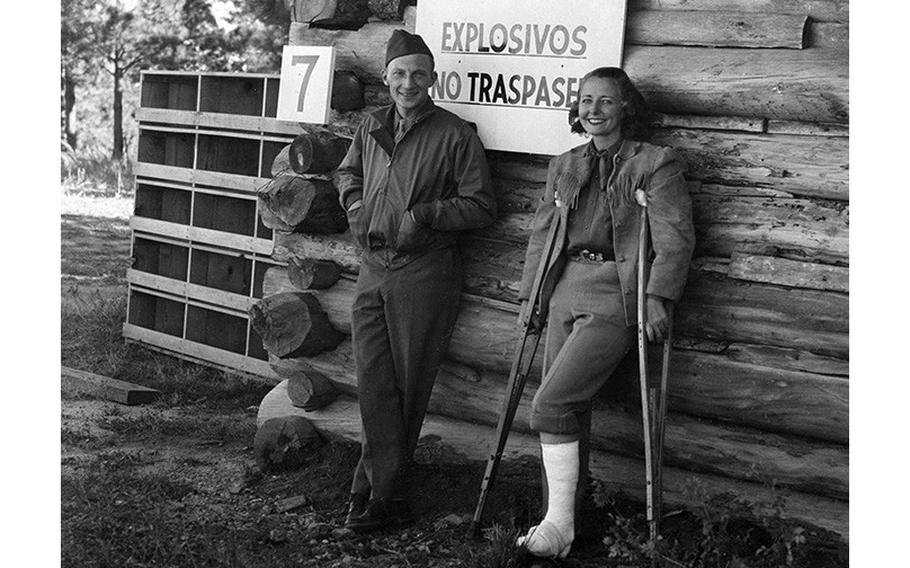History
Female scientists who worked on A-bomb mostly absent from 'Oppenheimer'
Special to The Washington Post August 13, 2023
On July 16, 1945, the world’s first atomic bomb was detonated approximately 60 miles north of White Sands National Monument. (White Sands Missile Range)
Female scientists played important roles in the Manhattan Project that created the first atomic bomb during World War II. But you wouldn't know this from the blockbuster movie, "Oppenheimer."
There were 640 women working at Los Alamos, 11% of the workforce, not counting other Manhattan Project sites elsewhere in the country. Many of these women filled administrative roles, but nearly half were scientists — mathematicians, physicists, chemists, biologists and computational analysts.
Some were leaders in their fields, although hardly household names.
Theoretical physicist Maria Goeppert Mayer shared a Nobel Prize in physics — with two men — in 1963, one of whom worked with her on nuclear shell structures. Chien-Shiung Wu was a celebrated nuclear physicist who studied under Ernest Lawrence, had Oppenheimer's enduring respect and provided in 1933 the first confirmation of physicist Enrico Fermi's theory of beta decay, a type of radioactive decay. A U.S. postage stamp was issued in her honor in 2021.
Others, though, are less well known.

Naomi Livesay was recruited to Los Alamos in 1944, and was asked to join the group that did the calculations leading up to the Trinity atomic bomb test. (Los Alamos National Laboratory)
Naomi Livesay was told: 'No place' for women in higher math
Naomi Livesay was a mathematician who had been told by the University of Wisconsin that she could not pursue a Ph.D in math because, as one of the professors in the math department put it, "there is no place in higher mathematics for any woman, however brilliant," according to the book, "Their Day in the Sun: Women of the Manhattan Project."
Livesay was recruited to Los Alamos in 1944, and was asked to join the group that did the calculations leading up to the Trinity atomic bomb test. It was a race against time, and the computation lab had just ordered IBM punched card machines to speed up the work.
Livesay was an expert at using the IBM machines, a skill most of the others in the computation lab lacked. It was implosion simulations performed by the punched card operation that helped the lab's leadership select the device that would ultimately be constructed — and detonated in the New Mexico desert on July 16, 1945.
Physicist Leona Woods (Leona Woods Marshall Libby), second row, second from right, with colleagues at the University of Chicago in 1946. Woods worked with Enrico Fermi at a Manhattan Project site in Chicago that developed the first nuclear reactor. (University of Chicago Photographic Archive)
Physicist Leona Woods worked with Fermi at a Manhattan Project site in Chicago that developed the first nuclear reactor. There's a remarkable photograph of her during her time there, standing in the middle of a group of men, staring hard at the camera. She could be saying, "please don't forget I was here, too."

In the spring of 1945, Frances Dunne’s leg broke when it was hit by a snapped cable. Dunne is pictured here at the Twomile Mesa explosives site with her colleague Howard Phanstiel. (Los Alamos National Laboratory)
Frances Dunne set triggers inside the bombs
Frances Dunne, an explosives technician, was part of a group that conducted the early explosives testing, in part because her small fingers were more dexterous than those of her male colleagues, and she could more easily reach inside the bombs to set the triggers.
Floy Agnes Lee, a biologist, was assigned to draw and analyze the blood of the scientists working with radioactive materials. After the war, she stayed on at Los Alamos and drew the blood of Louis Slotin, a 35-year-old physicist who died of radiation poisoning after an experiment with plutonium went horribly wrong.
Her experiences led her to spend much of her subsequent career studying the effects of radiation on living cells. She returned to Los Alamos in the 1970s to continue that research.
Theoretical physicist Maria Goeppert Mayer shared a Nobel Prize in physics — with two men — in 1963, one of whom worked with her on nuclear shell structures. (Los Alamos National Laboratory)
Maria Goeppert Mayer's battle for acceptance
Some 30 men with links to the Manhattan Project won Nobel Prizes over the course of their careers. Goeppert Mayer was the only woman to receive one. Yet for years she struggled for acceptance in academia, taking unpaid positions at universities because of rules against nepotism at places that employed her husband, chemist Joseph Mayer.
It wasn't until 1960, that Goeppert Mayer finally became a full professor, at the University of California at San Diego.
"Oppenheimer" tells a compelling story and certainly covers a lot of scientific ground. For the current generation of budding female scientists, it's important to learn that women also played significant roles in that momentous endeavor.
The male scientists featured in the film are sharply defined as characters, but Lilli Hornig, the one female scientist given some prominence in the movie, is a blur, popping up here and there to say they didn't teach typing in her graduate chemistry program at Harvard, when asked whether she could be a typist, or to rib a colleague, telling him that her reproductive system was better protected from radiation than his.
Lilli Hornig worked as a chemist during the Manhattan Project at Los Alamos. (Los Alamos National Laboratory)
The role unfortunately comes across as a bit of tokenism among the many more developed male scientist characters populating the movie. The real Honig worked closely on plutonium research and was part of the team that developed and tested the mechanism for the plutonium weapon in the Trinity test.
She became a respected chemist who fought for the rights of female scientists.
Historically, science has not recognized the work of women. When asked to name a female scientist of historic note, one of the first — and few — names to come to mind is Marie Curie, the physicist and chemist who did pioneering work on radium and won the Nobel Prize not once but twice. Others might mention Rosalind Franklin, the chemist and X-ray crystallographer, whose work was crucial to the understanding of the structure of DNA. Still others might remember the film "Hidden Figures" (2016), which tells the story of Katherine Johnson, the NASA mathematician whose trajectory calculations were critical to the success of early crewed space missions.
Yet for every Curie, Franklin or Johnson, there are many more female scientists whose contributions remain unknown.
"Oppenheimer" focuses on the life and science of one man, theoretical physicist J. Robert Oppenheimer, and a group of admittedly stellar male scientists around him. But it's important to recognize the accomplished women, too, who made contributions to every aspect of the Manhattan Project carried out in the United States.
Katie Hafner and Amy Scharf are creators and co-executive producers of "Lost Women of Science" podcast. Since 2021, they have been building an archive of scientists, with a list of names already in the hundreds, for the series. They also have created the "Lost Women of the Manhattan Project" podcast series. The point is to shine a light on women who achieved great things in science yet went unrecognized in their lifetime.